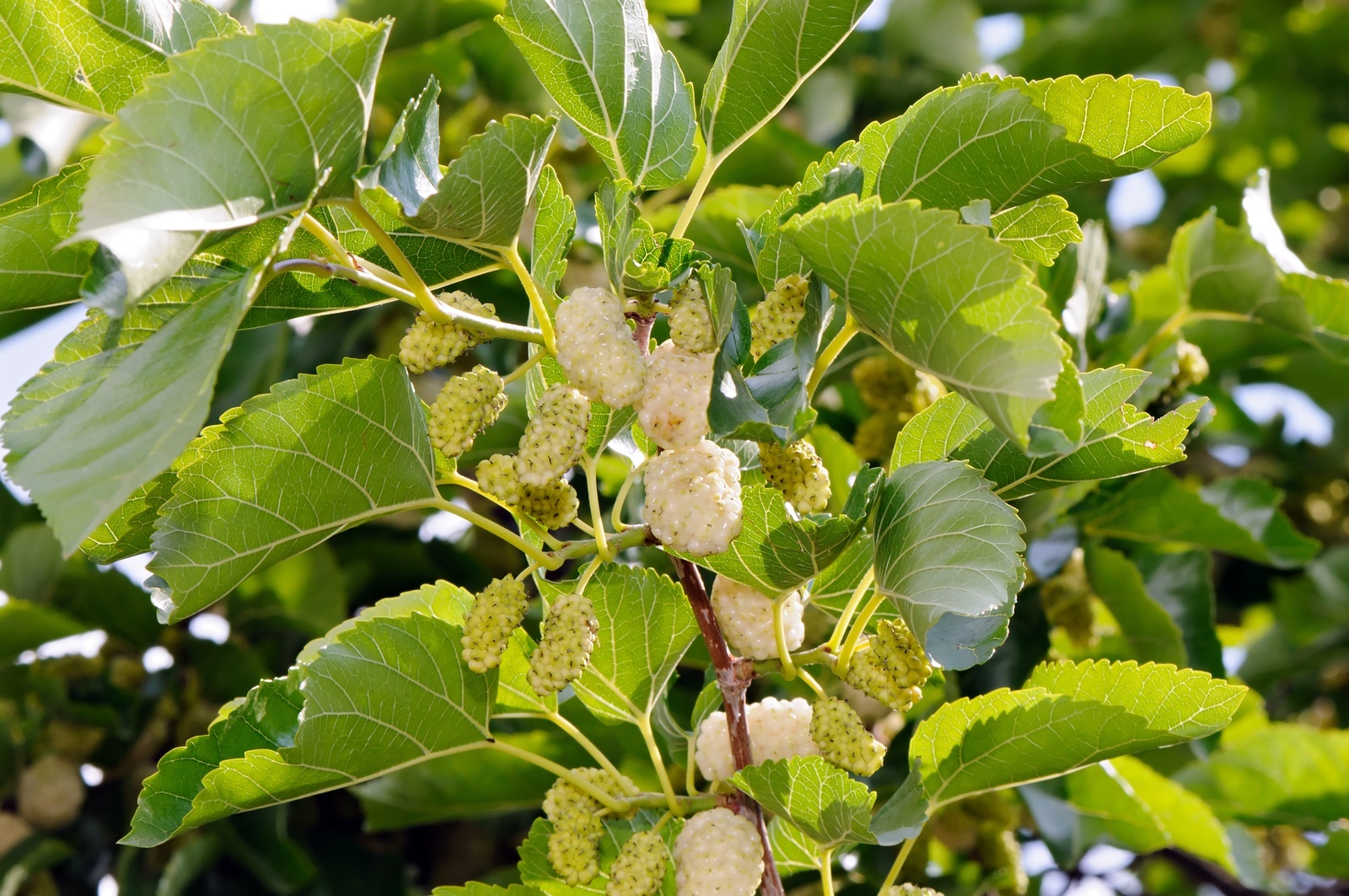
Mulberry Leaf Extract
Mulberry trees belong to the Moraceae family and grow in hot and humid climates. The dried leaves of Morus alba L. (white mulberry) are used to produce Mulberry leaf extract. Mulberry leaves have an ovate to broadly ovate shape with a round or heart-shaped base, tapering top, serrated edge and slender petiole. The surface of the leaves is glabrous and shiny, and the length of the leaves is around 5 cm to 7.5 cm. (1)
Medicinal Usage
Morus alba L. leaves have been widely used for thousands of years in Asian countries, mainly for treating diabetes and hypertension. Additionally, they have been used to treat fever and cough, infertility, snake bites, cancer, blindness and hyperpigmentation. The anti-diabetes activity of Mulberry leaf extract is reported in many studies. In a study published in 2019, anti-insulin resistance of Mulberry leaf extract is observed in diabetic rats. (2) It is stated in another study that the Mulberry leaf extract can suppress raised blood glucose levels after having a carbohydrate-rich meal by inhibiting the activity of disaccharidases in the small intestine of rats. (3) According to Kim et al. Morus alba leaf extract has more impact on diabetes than other medicinal plants such as Citrus unshiu, Dioscorea batatas and Chrysanthemum coronarium. (4) Similarly, Kumar stated in his PhD thesis that Mulberry leaf extract has a strong anti-diabetic property equal to the hypoglycemic effect of glibenclamide and metformin. (5)
To conclude, many clinical studies have proven the antidiabetic, antioxidant, antibacterial, anti-inflammatory, anticancer, cardiovascular, hypolipidemic, and antiatherogenic properties of white mulberry leaves.
Chemistry Behind
Mulberry leaves are rich in flavonoids and therefore capable of lowering blood sugar, reducing blood lipids, resisting viruses, resisting ageing and enhancing immunity. (2) They also contain nitrogen-involving sugars such as 1-Deoxynorijimycin (DNJ). DNJ works as a potent α-glucosidase inhibitor, therefore responsible for the anti-diabetic property of the Mulberry leaf extract. (3) Bionorm’s high-quality Mulberry leaf extract produced from Morus Alba L. contains more than 0.5% DNJ and more than 15% total flavonoids.
References
1. Ruiyuan Zhang, Qian Zhang, Shun Zhu, Biyang Liu, Fang Liu, Yao Xu, Mulberry leaf (Morus alba L.): A review of its potential influences in mechanisms of action on metabolic diseases, Pharmacological Research, Volume 175, 2022, 106029, ISSN 1043-6618. doi: 10.1016/j.phrs.2021.106029.
2. Guangqun Ma, Xiaoyun Chai, Guige Hou, Fenglan Zhao, Qingguo Meng, Phytochemistry, bioactivities and future prospects of mulberry leaves: A review, Food Chemistry, Volume 372, 2022, 131335, ISSN 0308-8146. doi: 10.1016/j.foodchem.2021.131335.
3. Miyahara, M. Miyazawa, S. Satoh, A. Sakai, S. Mizusaki, Inhibitory effects of mulberry leaf extract on postprandial hyperglicemia in normal rats. J. Nutr. Sci. Vitaminol, Tokyo, 2004 doi: 10.3177/jnsv.50.161
4. S.H. Lee, S.Y. Choi, H. Kim, J.S. Hwang, B.G. Lee, J.J. Gao, S.Y. Kim Mulberroside F isolated from the Leaves of Morus alba inhibits melanin biosynthesis Biol. Pharm. Bull., 25 (2002), pp. 1045-1048
5. M.N. Kumar Evaluation of hypoglycemic activity of Morus alba in alloxaninduced diabetic albino rats PhD Thesis, Rajir Gandhi University of Health Sciences, BangaloreKarnataka (2012)

